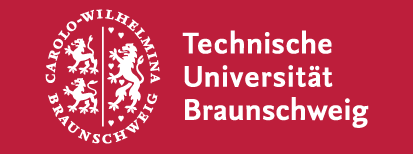Fundamentals of turbulence modeling
RANS models II
Andre Weiner, Institute of Fluid Mechanics
Outline
- RANS model overview
- $k$-$\varepsilon$ model
- $k$-$\omega$ model
- $k$-$\omega$-SST model
RANS model overview
model categories
- eddy viscosity models
- linear, algebraic
- linear, PDE-based
- non-linear, PDE-based
- stress models
- algebraic (3 PDEs)
- Reynolds stresses (7 PDEs)
historical perspective II
- 1974: $k$-$\varepsilon$ model
B. E. Launder, B. I. Sharma - 1988: $k$-$\omega$ model
D. C. Wilcox - 1992: Spalart-Allmaras model
P. R. Splart, S. R. Allmaras - 1994: $k$-$\omega$-SST model
F. R. Menter
$k$-$\varepsilon$ model
transport equation of (specific) turbulence kinetic energy
- trace of Reynolds stress transport equation
- multiplication of Navier-Stokes and RANS equations and with velocity fluctuations; summation of components; subtraction; rearrangement
starting point
$$\nu_t \propto l_c u_c$$
velocity scale $u_c = k^{0.5}$
length scale $l_c = k^{1.5}/\varepsilon$
$\rightarrow \nu_t = C_\mu k^2/\varepsilon$
additional modeling
- $k$ equation terms
- $\varepsilon$ transport equations and terms
boundary conditions (high $Re$)
- $\nu_t$ - log-law, Spalding's function
- $k$ - zero gradient ($\nabla k \cdot \mathbf{n}=0$)
- $\varepsilon$ - fixed value ($\varepsilon_{log} = C_\mu k^{1.5}/\nu_t$)
inlet conditions
- ideally from experiments
- estimate $k = 1.5 (IU_{in})^2$
- estimate $\varepsilon = C_\mu^{0.75}k^{1.5}/l_c$
favorable attributes
- simple and numerically robust
- only free stream conditions needed
- good accuracy in many cases
- extensively validated
bad performance in certain flows
- flows in which wall functions are not applicable
- unconfined flows (jet)
- flows with large extra strain (curved boundaries, swirls - think tornados)
- rotating flows (fans, turbo machinery)
- flows driven by anisotropy of Reynolds stresses (fully developed flows in square duct)
$k$-$\omega$ model
starting point
$$\nu_t \propto l_c u_c$$
velocity scale $u_c = k^{0.5}$
turbulence frequency $\omega = \varepsilon / k$
length scale $l_c = k^{0.5}/\omega$
$\rightarrow \nu_t = k/\omega$
favorable attributes
- similar to $k$-$\varepsilon$ model
- integration of wall layer possible
unfavorable attributes
- similar weaknesses as $k$-$\varepsilon$ model
- sensitivity to free stream values
$k$-$\omega$-SST model
starting point $\nu_t = k/\omega$
observation: plugging definition of $\varepsilon = k\omega$ into transport equation of $\varepsilon$ yields $\omega$ transport equation with additional terms
idea: combine favorable attributes of both models
favorable attributes
- combines the best of $k$-$\varepsilon$ and $k$-$\omega$ models
- very well validated
$\rightarrow$ default model of most practitioners
unfavorable attributes in certain flows remain
summary
- based on mixing length idea
- mostly empirical modeling of transport equations
- many weaknesses related to assumption of isotropic eddy viscosity
- many variants exist $\rightarrow$ check implementation and/or documentation before usage

